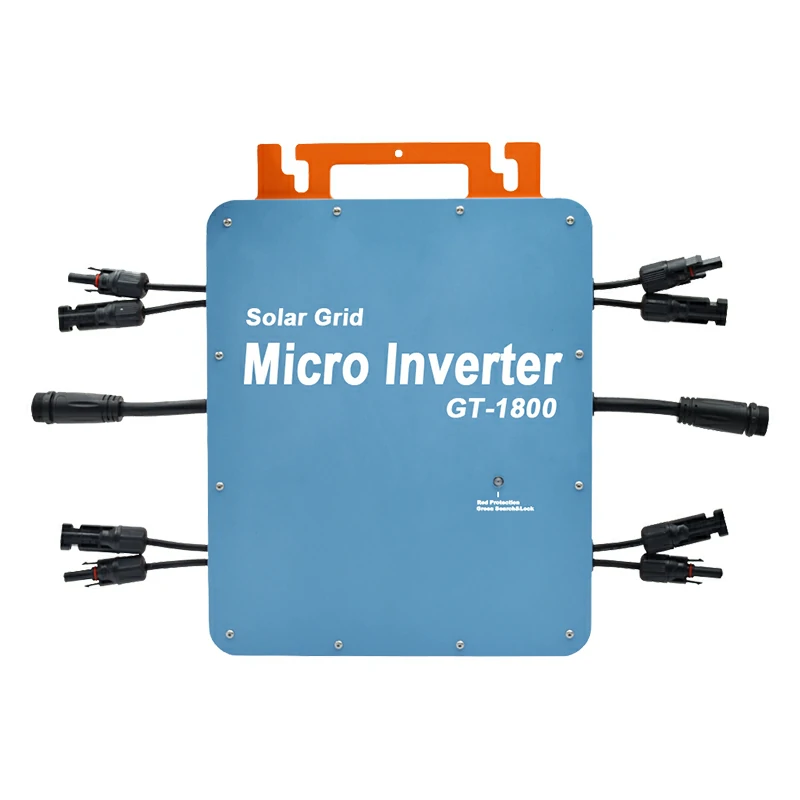Introduction
Solar photovoltaic (PV) systems have become increasingly popular as a sustainable energy solution. However, the choice of inverter technology can significantly impact the performance of these systems. In this article, we’ll explore how micro-inverter technology enhances the performance of solar PV systems.

Understanding Micro Inverters
Unlike traditional string inverters, micro inverters operate at the individual panel level, directly converting DC electricity from each solar panel into AC electricity. This approach offers several advantages over string inverters, making them a preferred choice for many solar system installations.
Micro inverter technology has gained traction due to its ability to optimize energy production, especially when shading or panel mismatch occurs. Micro inverters mitigate losses associated with these factors by converting power at the panel level, ultimately maximizing energy yield.
Enhanced Energy Harvesting
One of the significant advantages of micro inverter technology is its capability to optimize energy harvesting. Traditional string inverters can perform poorly when a single panel is shaded, or experiences mismatched output. However, with micro inverters, each panel operates independently, ensuring that shading or mismatch issues affecting one panel do not affect the entire system’s output.
Micro inverters continuously monitor each panel’s performance and adjust their operation to maximize energy production. This real-time optimization significantly improves the system’s efficiency, even in challenging environmental conditions.
Individual Panel Monitoring and Optimization
Another critical feature of micro inverter technology is individual panel-level monitoring and optimization. Unlike string inverters, which monitor the entire array as a single unit, micro inverters track the performance of each panel independently.
This granular monitoring capability allows users to promptly detect and address issues at the panel level. If a panel is underperforming due to shading, dirt, or other factors, the microinverter can adjust its operation to optimize energy production from that specific panel.
Additionally, micro-inverters enable users to fine-tune the performance of each panel to maximize overall system output. This level of control and optimization ensures that the solar PV system operates at peak efficiency under varying conditions.
Improved System Reliability and Safety
Micro inverter technology offers enhanced system reliability and safety compared to traditional string inverters. One of the primary reasons for this is the decentralized nature of micro-inverter systems. Unlike string inverters, where a single point of failure can affect the entire array, micro inverters operate independently.
If a malfunction or failure occurs in one micro inverter, the rest of the system remains unaffected, ensuring continued energy production. Additionally, micro inverters often come equipped with advanced safety features such as arc fault detection, further reducing the risk of electrical hazards.
When considering reliability and safety, choosing a reputable Micro Inverter manufacturer or supplier is essential. Companies with a proven track record of quality and reliability will ensure that your solar PV system operates safely and efficiently for years.
Enhanced Installation Flexibility and Scalability
Micro inverter technology offers enhanced flexibility and scalability in solar PV system installations. Unlike string inverters, which require panels to be connected in series, micro-inverters allow for parallel connections, offering greater flexibility in system design.
This modular approach enables easier system expansion and retrofitting. Users can add panels and micro inverters without significantly modifying the existing system. Microinverters are well-suited for installations with complex roof layouts or shading issues, as they can be installed on individual panels, optimizing energy production for each location.
Working with a reputable micro-inverter manufacturer or supplier is essential when considering installation flexibility and scalability. Companies with expertise in microinverter technology can provide tailored solutions to meet your specific installation requirements.
Cost Considerations and Long-Term Benefits
When evaluating the adoption of microinverter technology, it’s crucial to consider both upfront costs and long-term benefits. While micro-inverters may have a higher initial cost compared to string inverters, they offer numerous advantages that can result in significant long-term savings.
Factors influencing micro inverter systems’ return on investment (ROI) include increased energy production, reduced maintenance costs, and enhanced system reliability. By maximizing energy yield and minimizing downtime, micro inverters can deliver a compelling ROI over the lifetime of the solar PV system.
Working with a reputable Micro Inverter manufacturer or supplier is essential for ensuring the cost-effectiveness and reliability of your solar PV system. Companies with a proven track record can provide valuable insights and support to help you maximize the benefits of micro-inverter technology.
Conclusion
In conclusion, micro inverter technology plays a crucial role in enhancing the performance of solar PV systems. Micro-inverters optimize energy production, improve system reliability, and enhance safety by operating at the individual panel level. Their flexibility and scalability make them an ideal choice for a wide range of solar installations.
When considering microinverter technology, partnering with a reputable microinverter manufacturer or supplier is essential. With their expertise and support, you can maximize the benefits of micro-inverter technology and ensure the long-term success of your solar PV system.
By leveraging micro-inverter technology, users can unlock the full potential of solar energy and contribute to a more sustainable future.




